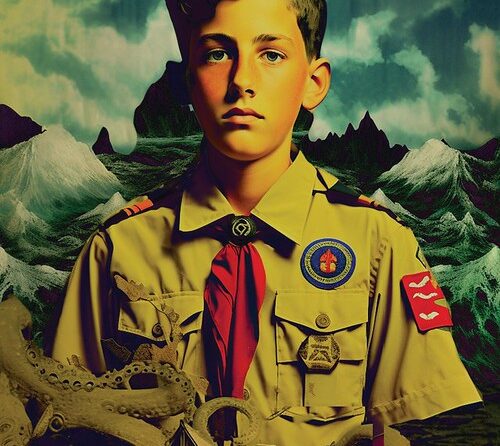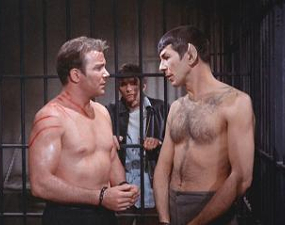Well, I got my Hugo nominations in, did you?
I was very gratified to see that people other than myself (and, presumably, those intimately involved with Amazing Stories) intended to nominate various things associated with Amazing Stories. Unfortunately, in most categories we might be considered for, we’re ineligible: 2018 saw only two issues, so, other than fiction (which is, of course, the primary focus of the awards), neither the magazine nor staff makes the cut in 2019. Next year though will be a different story.
But it is nice to see that others were sufficiently happy with the magazine so far to want to nominate it, even if the rules prevent that. It means we’re having some kind of an impact, and that’s gratifying.
(I nominated Allen Steele’s Captain Future in Love, among other short pieces)
***
The other day, Screenrant published a piece 10 Sci-Fi Novels to Wild to Adapt into Film, to which I say “bunkum and balderdash!”
The author claims that some science fiction novels are “… simply too wild or too incredible to film. Or, at least, to film well. It is possible to make them, but, for one reason or another, they are all but impossible to adapt to the big screen. The concepts may be just too insane or bewildering to capture in visual form. Others require ideas too abstract to make material.”
Have they no familiarity with Fellini?
The books listed are: Ubik by Dick, The Man Who Folded Himself by Gerrold, The Gone Away World by Harkaway, Dreamsnake by McIntyre, Gravity’s Rainbow by Pynchon, Xeelee Sequence by Baxter, All of an Instant by Garfinkle, “Anything” by Lovecraft, Dhalgren by Delany and House of Leaves by Danielewski.
In general summation, the author suggests that these books can never be made into a film, or at least not made into a good film. Underlying that is the contention that even if made, audiences would not understand them and they’d make no money.
Of course, any book could be made into a bad film (and many have), but I think that the general statement places too many artificial restrictions on the exercise.
In commenting on each work, the author states, variously, that main stream audiences would not want to pay to see such a thing, the story does not lend itself to the visual medium, its psychedelically too abstract, too complex of a story, too many characters, too large a scale, concepts are too incomprehensible, too much word play in the original.
These are largely only problems if you restrict yourself to the idea of a “successful film” as one that a mainstream audience will reward financially. There have been numerous films over the years that have been psychedelic, incomprehensible and critically acclaimed, without appealing to mainstream audiences and without being financially successful.
Give me an audience of readers of science fiction, give me a screenwriter who respects the genre and works in it, give me a director who is positive towards the genre, has actually read the work in question and doesn’t have the directorial urge to piss all over the original (in other words, a director who understands the theme(s) and feels no need to change them) and you could make a go of turning any of those works into a film, one that would have a much better chance at success than the sausage-making exercise that is traditional Hollywood filmmaking.
Take Dhalgren, for example: not only is the novel “psychedelic” and phantasmagorical in nature, it’s also dense, long and circular in nature. Squeeze that into 120 minutes? No way. But what about a 4 or 6 hour loop? Play it continuously and let audience members “start” the film whenever they arrive at the theater and leave when it comes back around to the point in the story they entered.
And didn’t Kubrick start a whole Hollywood cottage industry with his abstract voyage into the unknown light show in 2001? You can’t depict the incomprehensible on the screen? No, you can’t, but you can effectively substitute the abstract to convey incomprehensibility. Scale? There’s animated journeys (based on real data) that depict traveling from Earth to outside the entire cosmos already up on Youtube.
Of course, none of this addresses the issue of whether or not a particular book should be made into a film. If your goal is appealing to a mainstream audience in order to make money, the answer is often “no”. If, on the other hand, you’re into it for the art, for the attempt to do a take on an important or interesting book in a different medium, then you’re at least heading in the right direction.











This echoes my own sentiments perfectly, Steve. And, of course, some bad books have been made into good films (happens perhaps more in the thriller genre). The use of abstraction can be a great way to go, and layering thrills with spiritual, intellectual and even comedic elements can be done perfectly, too. I am a huge Tarkovsky fan, and he made the perfect version of “Solaris” with layer upon layer, rather than the more pedestrian Clooney vehicle. Let’s not forget the wonderful adaptation of Jeff VanderMeer’s “Annihilation”, with all its complexity. But, of course, producers do tend to play it safe. The way to go now, I feel, is series is a good way to go for more complex projects (think about “The Handmaid’s Tale” and “The Man in the High Castle”, even though they depart from their source material, film does anyway.
Here’s another idea: a contemporary dance work based on “Dhalgren” – insect costumes included.